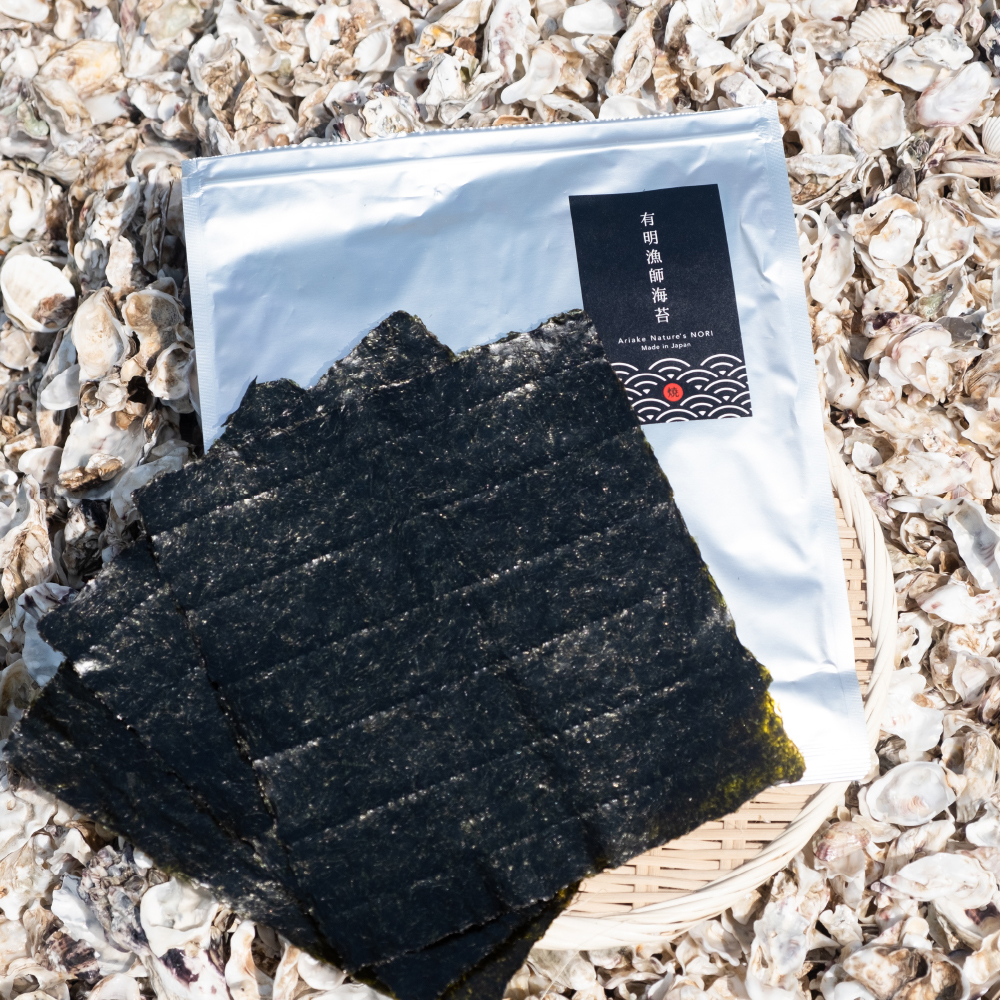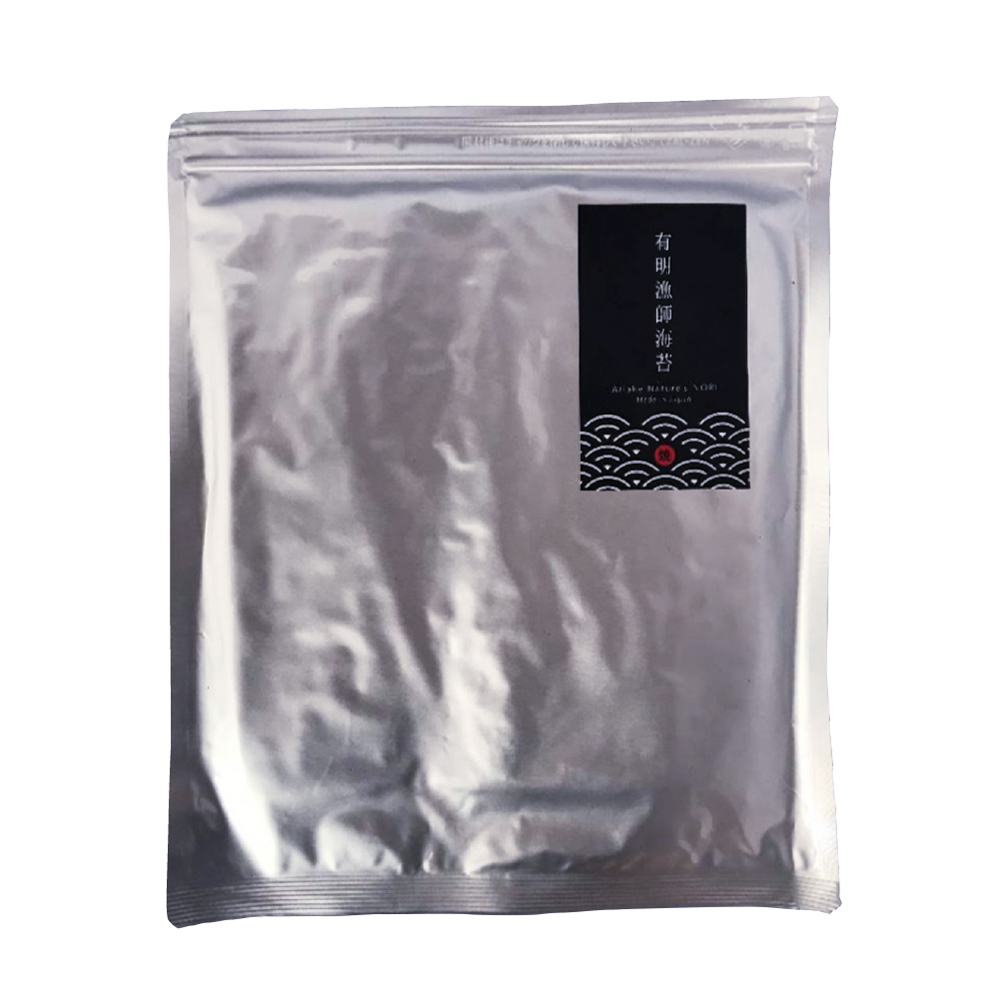Toasted seaweed (AA rank)
-
- Optimum time (season)
- December - March
-
- Shelf life/consumption date
- 24 months
-
- Quantity
- 10 pieces (35 g) / 2 pieces (7 g)
-
- Suggested retail price
(tax included) - 756 yen / 200 yen
- Suggested retail price
-
- Quantity (box/case)
- 240 bags
-
- Storage temperature range
- Room temperature
-
- Minimum case delivery unit
- 1 box (*adjusted flexibly)
-
- Case size (Weight)
- L 650 x W 400 x H 470 mm (19 kg)
-
- Certification / Approval of
Certification Body
(product, factory, etc.) - Certified "Kosher" religious food for Jews
- Certification / Approval of
- Product features
-
Spécificités du produit (Qualités organoleptiques/nutritionnelles, origine géographique, méthode de fabrication spécifique)
Product features (information about taste and nutrients, special production/manufacturing methods/specialties of the production location)
○Place of origin
Seaweed is now consumed all over the world. The origin of seaweed cultivation is Kumamoto Prefecture. Our seaweed is cultivated in the Ariake Sea off the coast of Kumamoto Prefecture. In particular, sea around Kumamoto City's Nishi Ward, where the subterranean waters of Mt. Aso and Mt. Kinpo flow, is rich not only in nutrients from sea but also in minerals from mountains. Rich nutrients and unique tidal range of up to 6 meters in the Ariake Sea make it a very suitable environment for seaweed cultivation.
○Aquaculture
The seaweed is carefully cultivated using a method called the "pole method" that maximizes tidal variation. For several hours every day, the seaweed floats completely out of the sea and is bathed in sunlight, which not only makes it resistant to disease but also concentrates its flavor.
○Drying
After harvesting, the laver is dried slowly at low temperatures so as not to damage its cell walls. In addition, salt concentration is carefully adjusted. This allows the nutrients and flavor stored in the cells to remain locked in the laver for shipment. In particular, we check salinity of laver under a microscope each time it is processed, and calculate appropriate concentration for condition of the laver each time. This is also our specialty.
○Packaging
Crispiness is very important for toasted seaweed. However, most seaweed on the market is packaged in transparent film bags, which allow moisture to pass through, so even if a desiccant is used, it will become damp and oxidize within a few weeks, losing its crispness.
In addition, oxidized seaweed not only has a bad taste, but also leaves a bitter aftertaste. Therefore, we basically pack our products in aluminum packages.
As a result, while most of our products have a shelf life of one year, we offer a shelf life of two years.
- Instructions/advice on how to use and to eat.
-
Mode de consommation / Suggestion d'utilisation (Instructions/advice on how to use and to eat.)
Les algues nori peuvent être utilisées de diverses manières, par exemple saupoudrées sur une soupe de miso, un bouillon ou des pâtes, ou mélangées à du beurre ou du fromage pour ajouter de la saveur et du goût.
Seaweed is a food that is sensitive to drying. It is best to cook and eat it immediately after removing it from the aluminum bag.
After taking out the seaweed, zipper up aluminum bag and seal it immediately. Seaweed can be enjoyed for more than two years if it is kept sealed. It can be stored at room temperature.
Ariake Nature's Nori Co.,Ltd
-
- Name of Representative
- Representative Shingo Hayashi
-
- Number of employees
- 0(5 board members)
-
- Company Location
- 3-20 Chibajo-cho, Chuo-ku, Kumamoto City, Kumamoto Prefecture Chibajo Building II-101
-
- Factory Address
- 2251-1 Sumiyoshi-cho, Uto City, Kumamoto Prefecture
-
- Contact Person
- Shingo Hayashi
-
- E-mail address
- hayashi.shingo@e-inc.co.jp








